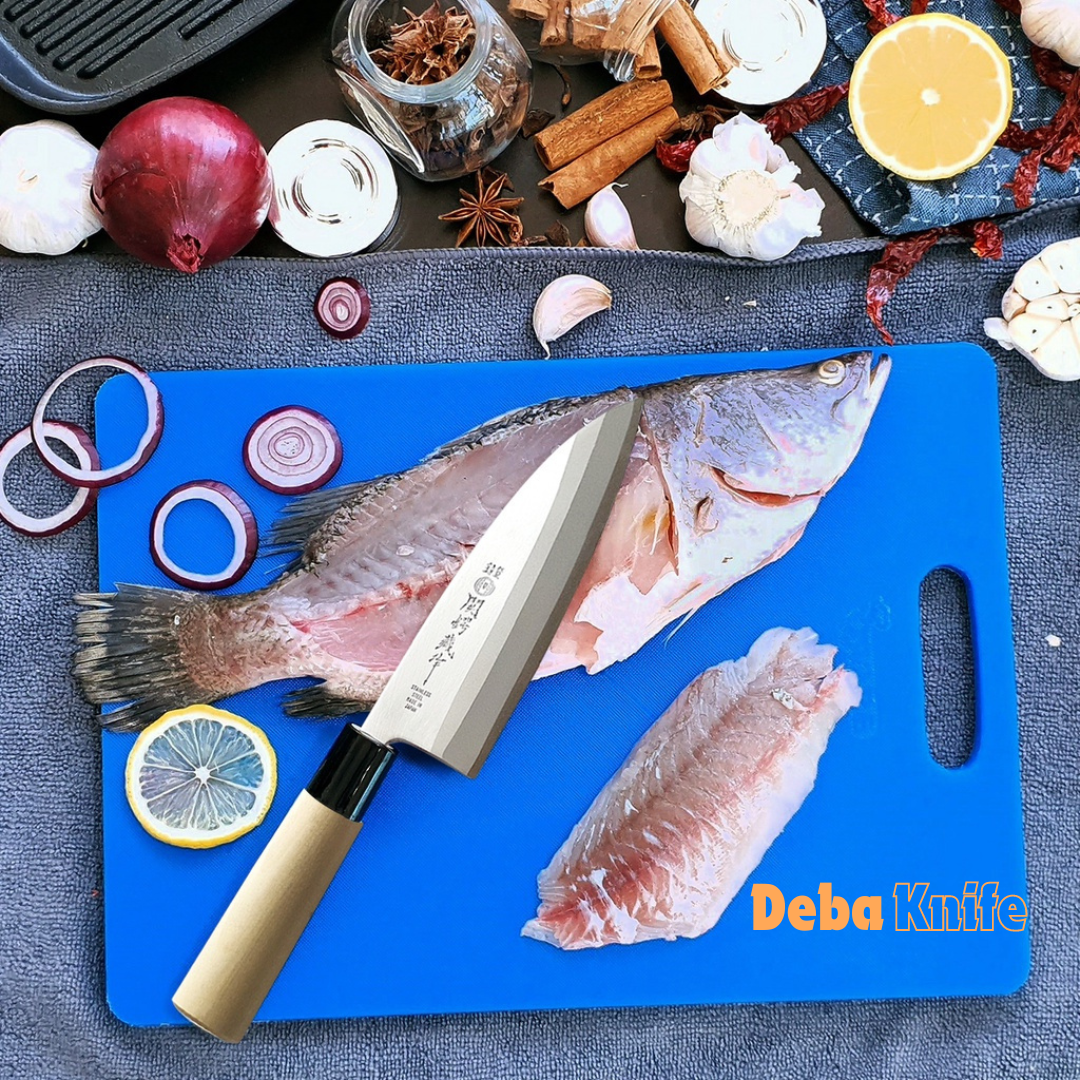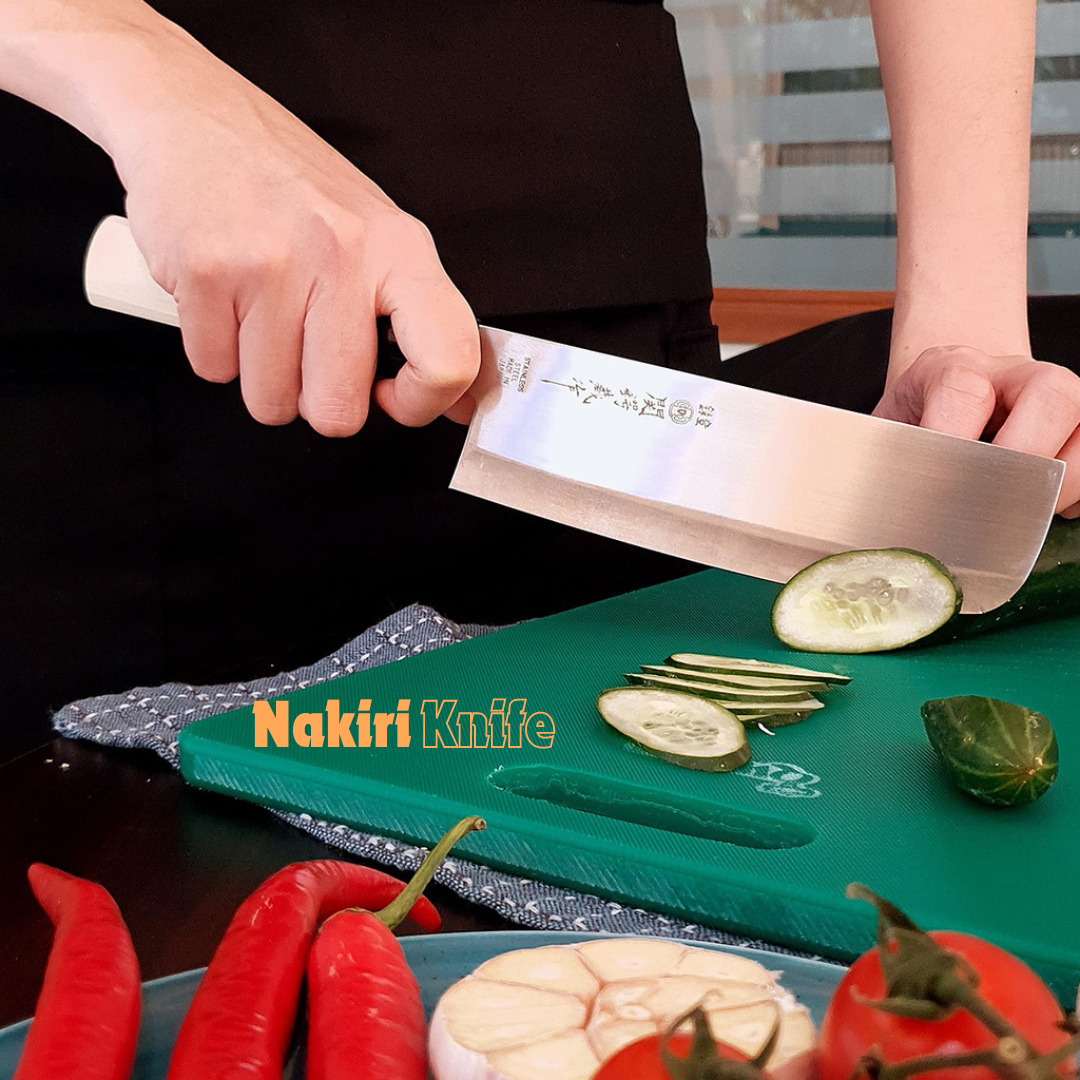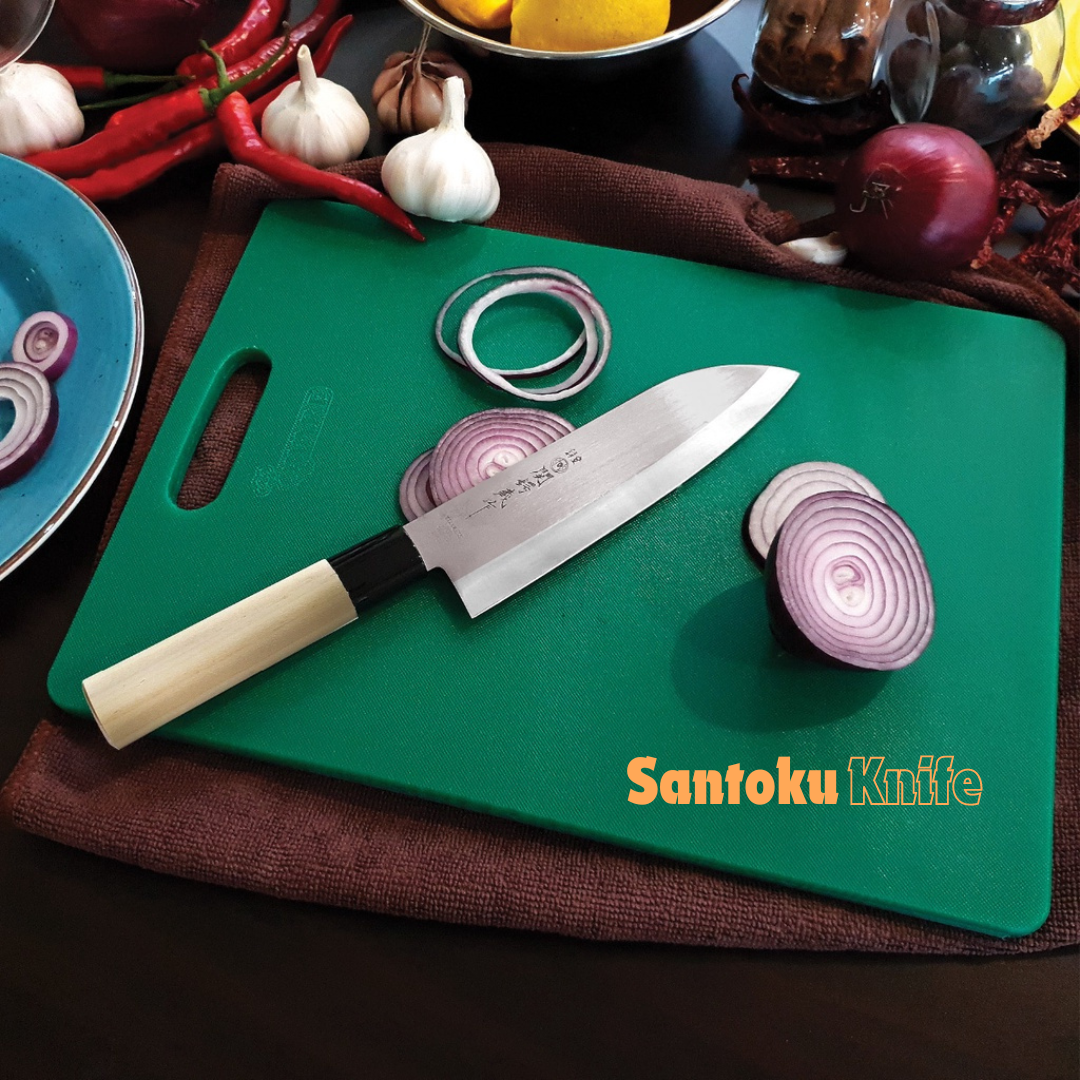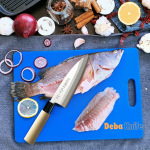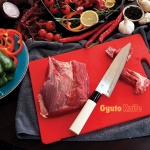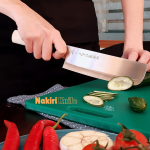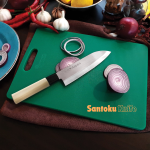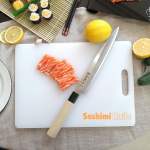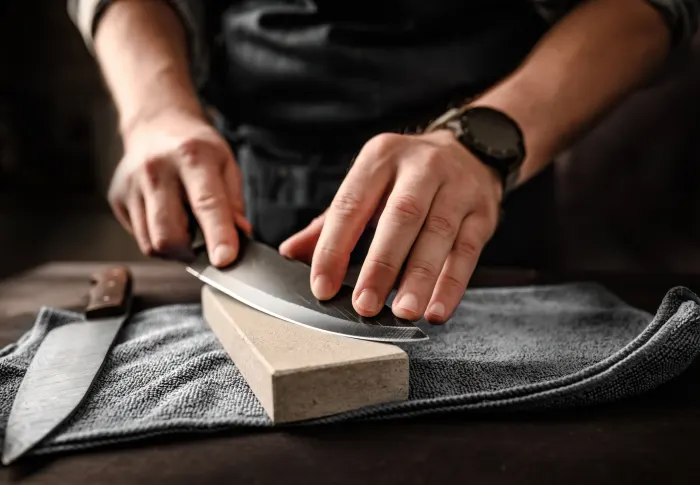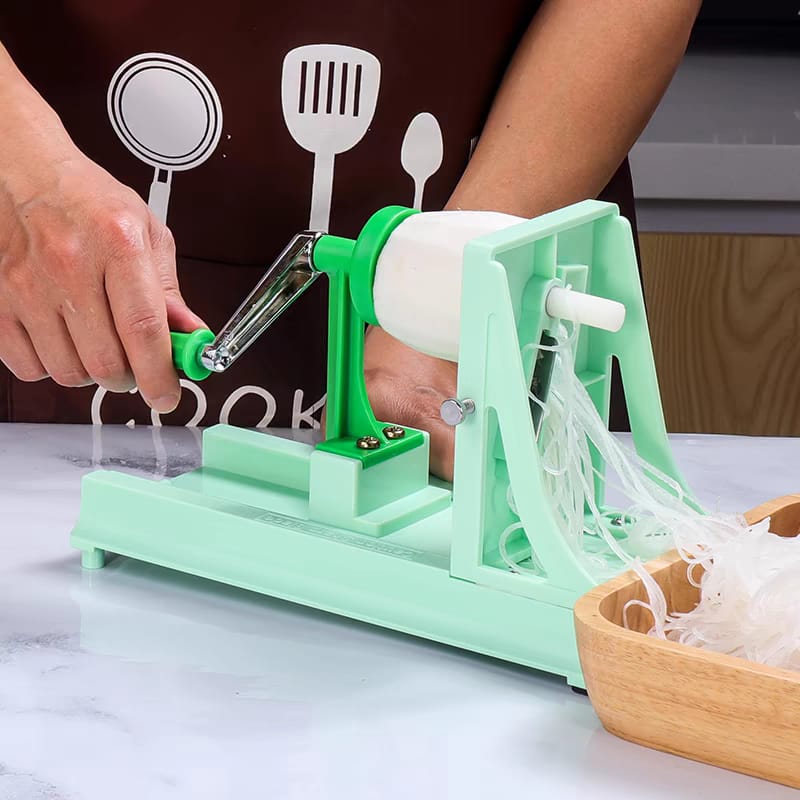Japanese KNIFE
RM89.99 – RM150.00
A Japanese knife is a precision-crafted tool that embodies the artistry and tradition of Japanese culinary craftsmanship. Known for their exceptional sharpness, balance, and lightweight design, Japanese knives are favored by professional chefs and home cooks alike for their ability to deliver precise, clean cuts with minimal effort.
Renowned for their durability and edge retention, Japanese knives are not only functional kitchen tools but also works of art that reflect the rich cultural heritage of Japan. Whether you’re a sushi connoisseur or a culinary enthusiast, a Japanese knife is an essential addition to your kitchen, offering unmatched precision and performance.
Description
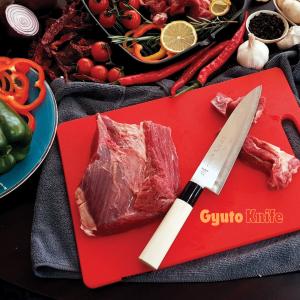
The Gyuto (Chef’s) Knife, known in Japanese as 牛刀包丁 (Gyūtō Bōchō), is a versatile, multi-purpose Japanese kitchen knife. It is best used for cutting chicken, fish, herbs, and vegetables. The Gyuto is the Japanese version of the Western chef’s knife, featuring a double bevel blade that is thinner, lighter, and sharper, making it ideal for chopping, slicing, mincing, and dicing. The relatively flat heel is perfect for various chopping styles, while the slightly curved belly facilitates rock-cutting. The pointed tip allows for precision cuts. Originally designed for slicing large cuts of beef, the Gyuto is now a versatile all-rounder in the kitchen, suitable for most tasks except heavy-duty work, as its thin, hard blade may chip or crack when cutting through bones or smashing garlic.
**********************************************************************************************************
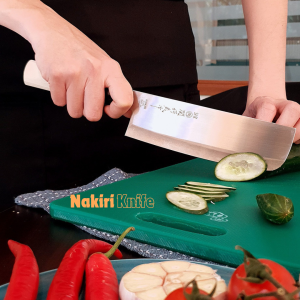
The Nakiri Knife, known in Japanese as 菜切り包丁 (Nakiri bōchō), is a Western-style Japanese vegetable knife with a thin, broad rectangular blade. It is best used for chopping, slicing, dicing, and mincing vegetables and fruits. The Nakiri features a straight cutting edge and a flat, blunt tip, making it ideal for up-and-down chopping motions that ensure clean, efficient cuts. The knife’s double bevel edge provides balance and ease of use, making it popular among home cooks and vegetarians in Japan. The Nakiri’s name, meaning “knife for cutting greens,” highlights its purpose as an excellent tool for quickly and efficiently preparing vegetables.
**********************************************************************************************************
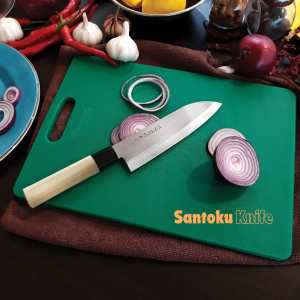
The Santoku Knife, known in Japanese as 三徳包丁 (Santoku Bōchō), is a versatile Japanese kitchen knife. The name “Santoku” translates to “three virtues,” referring to its ability to chop, slice, and dice, or its versatility in handling meat, fish, and vegetables. Characterized by its straight cutting edge and wide sheepsfoot blade, the Santoku excels in tap-chopping and push-cutting techniques, though it lacks the curve for rock-cutting. Popular in Japan and often compared to the Western chef’s knife, the Santoku is shorter, lighter, and thinner, making it easier to handle, especially for those with smaller hands. Originally a single bevel knife, it is now also available in double bevel versions, maintaining its sharp edge and precision.
**********************************************************************************************************
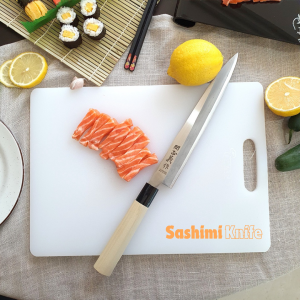
The Yanagiba (Sashimi) Knife, known in Japanese as 柳刃包丁 (やなぎば) or Yanagi-ba Bōchō, is a traditional Japanese kitchen knife. It features a long, narrow blade with a pointed tip and a single bevel edge, ideal for slicing boneless fish fillets for sashimi or nigiri sushi. The knife’s design allows for smooth, precise cuts with minimal force, preserving the fish’s texture and flavor.
**********************************************************************************************************
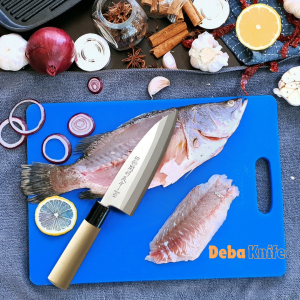
The Deba Knife, known in Japanese as 出刃包丁 (Deba Bōchō), is a traditional Japanese kitchen knife. Best suited for working with whole fish, the Deba is a sturdy, heavy knife with a thick spine, wide blade, and pointed tip, making it ideal for filleting, beheading, and cutting through fish bones. It is also used for breaking down poultry and cutting meat with small bones, though it is not suitable for cutting through large bones. The Deba’s single bevel edge allows for deep, clean cuts, and every part of the blade is designed for specific tasks, such as removing the fish head, filleting, and slicing. While it may feel unfamiliar to those used to Western-style knives, with practice, the Deba knife excels in minimizing damage to fish, reducing waste, and producing precise cuts.


